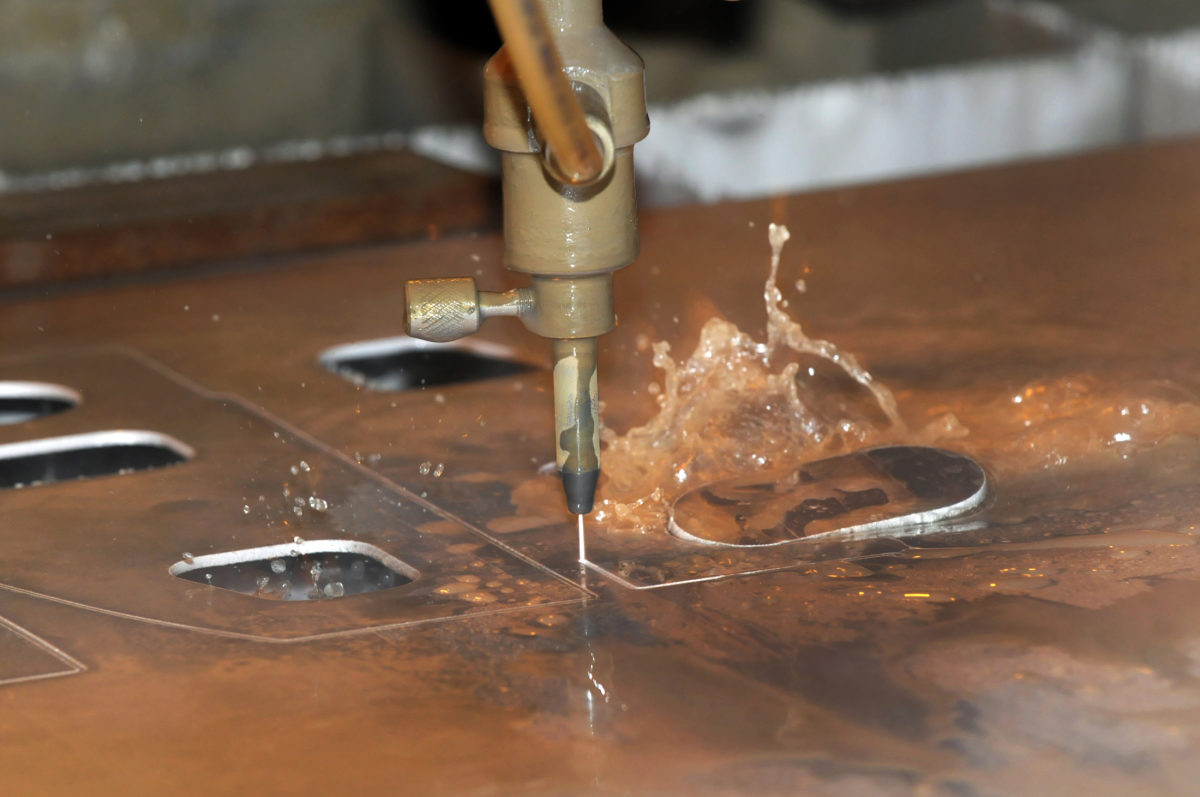Metal is one of the most versatile materials in the industrialized world. It can be cut and shaped into nearly any size or design idea. Today's fabrication techniques have come a long way since the early days of heating and shaping it for weapons and other items. Engineers rely on sheet metal for prototypes and outright production. Explore the sheet metal fabrication service choices today for a productive tomorrow.
1. Bending
There are two forms of bending metal, including metal brake and form techniques. Metal-brake techniques require half of the sheet to be held flat while bending the opposite end into a 90-degree angle or another shape.
Form techniques employ a shape, metal sheet and hammer to create a design. Workers use the hammer against the metal and shape in order to complete the project.
When engineers opt for online sheet metal fabrication, certain designs can be formed with metal and no heat. The cost savings are considerable when engineers add in labor costs to their prototypes.
2. Cutting
Cutting metal is one of the most basic techniques when workers are either roughing in a shape or refining it. The tools that are used in "rough" techniques include these items, such as:
• Hand shears
• Power shears
• Throatless shears
• Angle grinders
The tools cut metal of almost any thickness so that it can be shaped even further by other methods.
A refining technique is achieved with a plasma cutter. These high-tech tools use gas heated into its plasma form to cut accurate lines on any metal. If you order a sheet metal fabrication service, the cutting method might be a discussion point before production.
3. Shrinking
When metal is hot, it expands and vice versa. Fabrication workers might use heat shrinking in order to minimize the size of a particular piece of metal. They use a torch on a stretched section and allow it to cool. The abrupt change from hot to cool will shrink the material.
Workers also use tucking as a shrinking method. In essence, workers apply a hammer to the metal so that it bunches up in sections.
A more elegant shrinking method employs a shrinker. Machined jaws grab the metal and force it down on itself. It leaves the metal with a more attractive appearance than the other methods.
4. Stretching
A seemingly simple way to stretch metal is by using a machine that pulls the material like taffy. This stretcher machine takes the effort out of the manual way to stretch metal with a hammer and dolly. Hold up the metal, strike it with a hammer and stretching occurs in small increments with each impact.
Factories can also use an English wheel that essentially uses two wheels to stretch a single piece of metal.
Look for an online sheet metal fabrication company for that next design right now. Uploading, correcting and putting that idea into the world is easier than ever with online orders and worldwide fabrication options. The sky is the limit with engineers taking flight with the latest materials and production strategies.
Want to learn more about digital manufacturing? There are more technologies to explore like CNC machining, 3D printing or injection molding.
This article does not necessarily reflect the opinions of the editors or management of EconoTimes.



 Oracle Stock Surges After Hours on TikTok Deal Optimism and OpenAI Fundraising Buzz
Oracle Stock Surges After Hours on TikTok Deal Optimism and OpenAI Fundraising Buzz  Robinhood Expands Sports Event Contracts With Player Performance Wagers
Robinhood Expands Sports Event Contracts With Player Performance Wagers  Union-Aligned Investors Question Amazon, Walmart and Alphabet on Trump Immigration Policies
Union-Aligned Investors Question Amazon, Walmart and Alphabet on Trump Immigration Policies  Blackstone Leads $400 Million Funding Round in Cyera at $9 Billion Valuation
Blackstone Leads $400 Million Funding Round in Cyera at $9 Billion Valuation  Shell M&A Chief Exits After BP Takeover Proposal Rejected
Shell M&A Chief Exits After BP Takeover Proposal Rejected  Oracle Stock Slides After Blue Owl Exit Report, Company Says Michigan Data Center Talks Remain on Track
Oracle Stock Slides After Blue Owl Exit Report, Company Says Michigan Data Center Talks Remain on Track  MetaX IPO Soars as China’s AI Chip Stocks Ignite Investor Frenzy
MetaX IPO Soars as China’s AI Chip Stocks Ignite Investor Frenzy  Citi Appoints Ryan Ellis as Head of Markets Sales for Australia and New Zealand
Citi Appoints Ryan Ellis as Head of Markets Sales for Australia and New Zealand  Harris Associates Open to Revised Paramount Skydance Bid for Warner Bros Discovery
Harris Associates Open to Revised Paramount Skydance Bid for Warner Bros Discovery  Sanofi’s Efdoralprin Alfa Gains EMA Orphan Status for Rare Lung Disease
Sanofi’s Efdoralprin Alfa Gains EMA Orphan Status for Rare Lung Disease  Apple Opens iPhone to Alternative App Stores in Japan Under New Competition Law
Apple Opens iPhone to Alternative App Stores in Japan Under New Competition Law  Trump Administration Reviews Nvidia H200 Chip Sales to China, Marking Major Shift in U.S. AI Export Policy
Trump Administration Reviews Nvidia H200 Chip Sales to China, Marking Major Shift in U.S. AI Export Policy  OpenAI Explores Massive Funding Round at $750 Billion Valuation
OpenAI Explores Massive Funding Round at $750 Billion Valuation  Elliott Management Takes $1 Billion Stake in Lululemon, Pushes for Leadership Change
Elliott Management Takes $1 Billion Stake in Lululemon, Pushes for Leadership Change  Micron Technology Forecasts Surge in Revenue and Earnings on AI-Driven Memory Demand
Micron Technology Forecasts Surge in Revenue and Earnings on AI-Driven Memory Demand  Delta Air Lines President Glen Hauenstein to Retire, Leaving Legacy of Premium Strategy
Delta Air Lines President Glen Hauenstein to Retire, Leaving Legacy of Premium Strategy  TikTok U.S. Deal Advances as ByteDance Signs Binding Joint Venture Agreement
TikTok U.S. Deal Advances as ByteDance Signs Binding Joint Venture Agreement 































